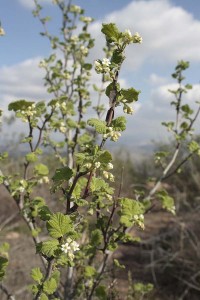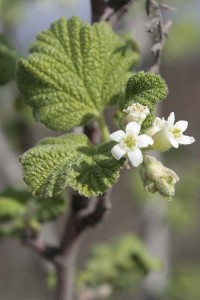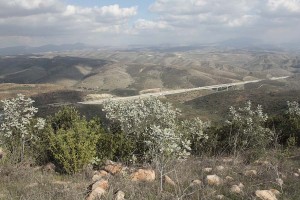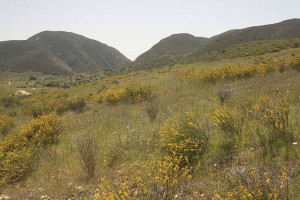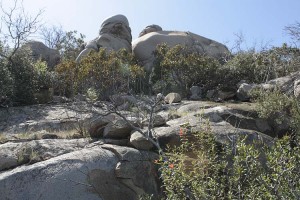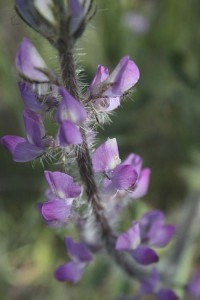On my last little outing to my city’s largest open-space park, before the recent rains, while I wasn’t busy looking at sycamores, I was heading up the trail to Fortuna Peak, one of the highest point in the city limits. At 1291 feet in elevation and with good trails all the way, it’s no serious mountain climb, but the view from the top gives you views from the ocean to the west to the first ranges of real mountains to the east.
Many of the local wild parks have signs warning you about the dangerous fauna in the area–mostly rattlesnakes. Here the sign cautions hikers about the mountain lions that live here on the park’s more than 5000 acres and in the adjacent open space.
I’m used to being the top predator almost wherever I go. Even confronting a sign like this, I still manage to don that cloak of invincibility stitched through years of never confronting anything that might challenge that sense. I’m also a pretty statistics-driven person. I might think about how you’re many times more likely to meet your end by lightening strike on a golf course than hiking through land like this. Many more people die from smoking than they do through mountain lion attack.
For me, knowing that there are mountain lions in the vicinity adds to the adventure. Somehow this park feels more authentic, more alive, more complete because of it.
It brings to mind the only solo backpacking trip I’ve taken through Utah’s Cedar Mesa backcountry. Five minutes after entering the wilderness area I encountered the only human I was to see for the rest of the trip as he was leaving. Ten minutes into the trip I was crossing a stream bed still moist from an afternoon thunderstorm. As I stepped into the sand I noticed one immense, perfect paw print next to my boot. A mountain lion had passed this way in the last few hours. I’d be lying if I didn’t admit to feeling a quick stab of fear at that moment. Welcome to the wild.
Maybe that’s a bit too much macho posturing on my part. If I were attacked by one of these cats, the first thing the authorities would do is to go after it. People would demand it. My recklessness would lead to the destruction of one of these elusive creatures. But I’m not a mountain lion’s favorite food, and these signs always seem like a park authority trying to limit their liability. Really, what are the odds of suffering any harm?
The wilds today didn’t offer anything so dramatic as mountain lions. A few other hikers were out, some of them totally fit and practically running, others looking like they were there because of a New Year’s resolution. Almost nothing was in bloom, but white-flowering currant (Ribes indecorum) provided bright accent marks along the trail to the top.
Once on top the view expands all around you. Look north and you see open chaparral and the runways of Miramar Air Station several miles away. Military installations may take up a certain amount of a city’s land, but they often manage to preserve open space in ways that suburban sprawl doesn’t.
Turn a little east and there you begin to see the ranks of foothills leading up to the Cuyamaca and Laguna ranges that divide the county, coastal region on one side, desert on the other. Yerba santa and black sage provide the foreground.
After I returned home from the hike I finally opened up the latest issue of Orion Magazine. One of the pieces, “Spectral Light” by Amy Irvine, describes a city family that has moved into a area in the Southwest as they come to grips with living in an area that is wilder than they ever imagined. Definitely got me thinking. It’s worth picking up the January/February 2010 issue to read it, or you can listen to the author read her piece or download the podcast [ here ].



